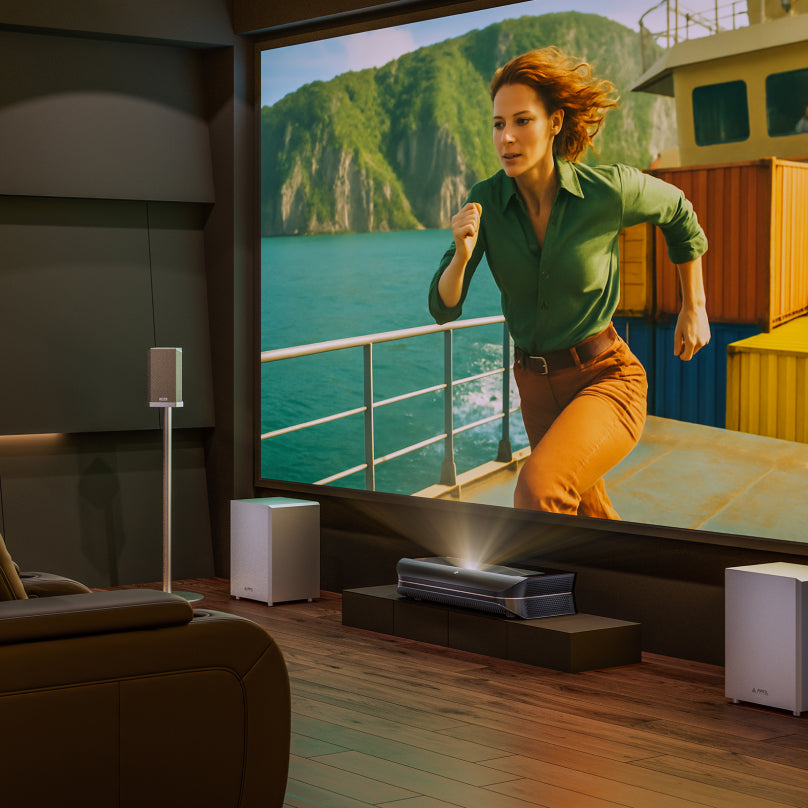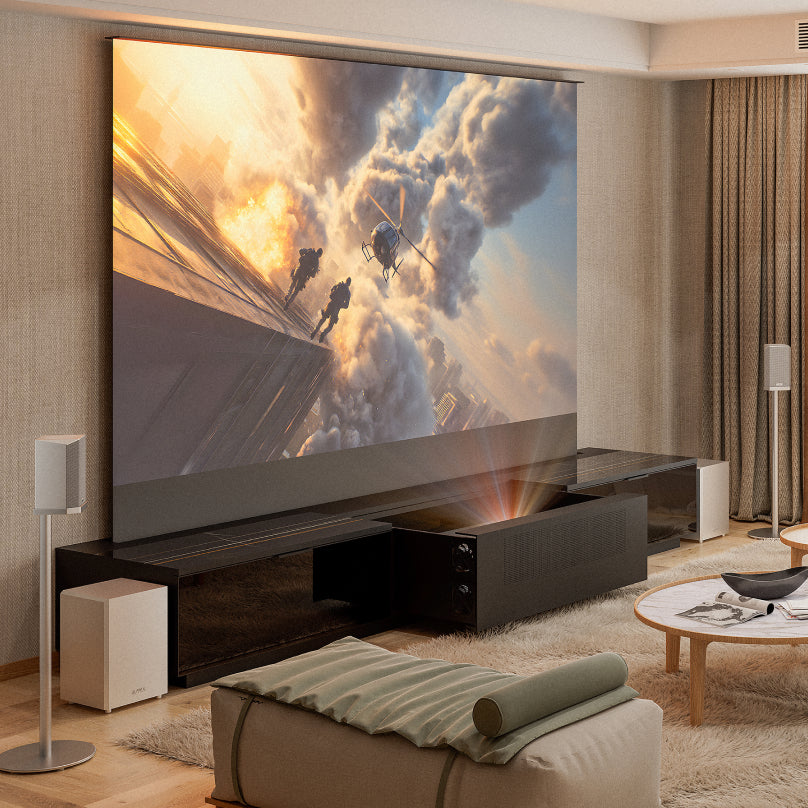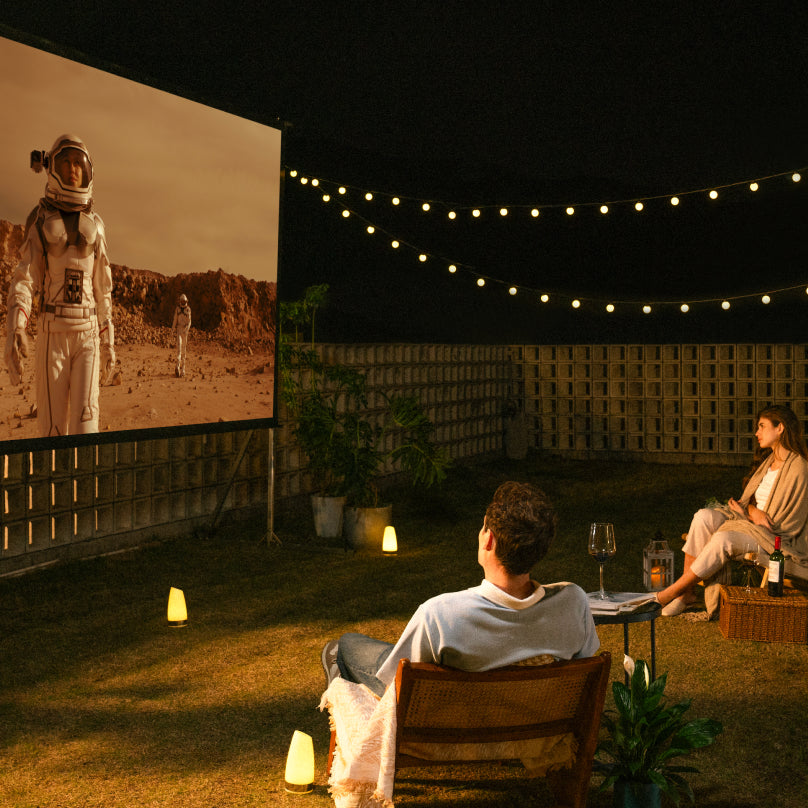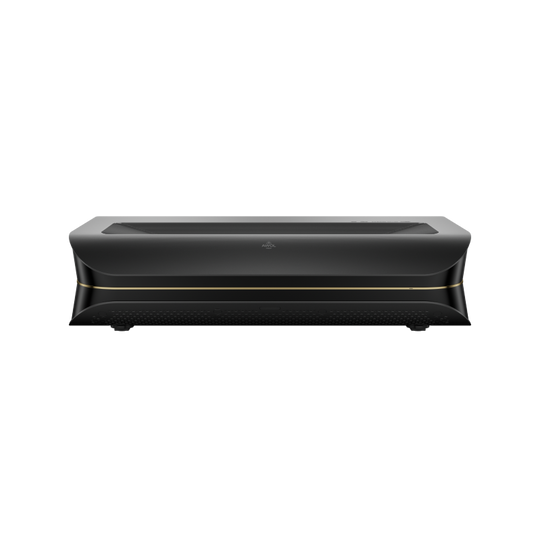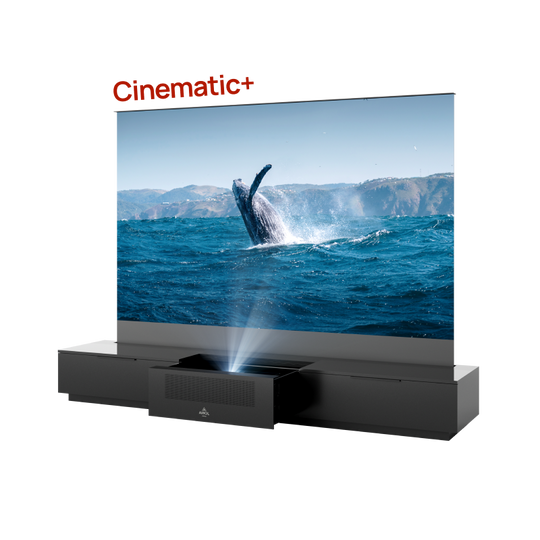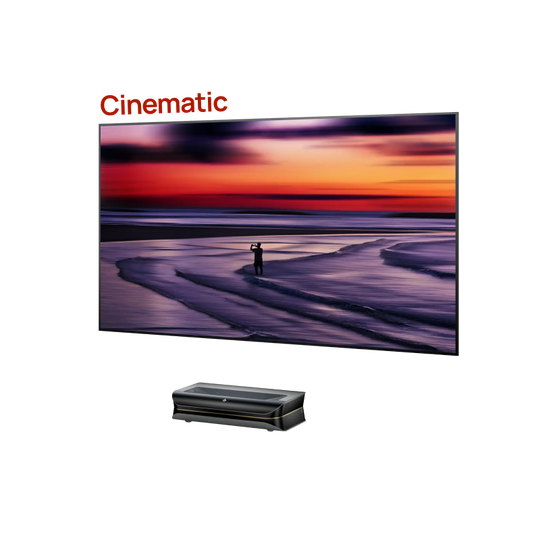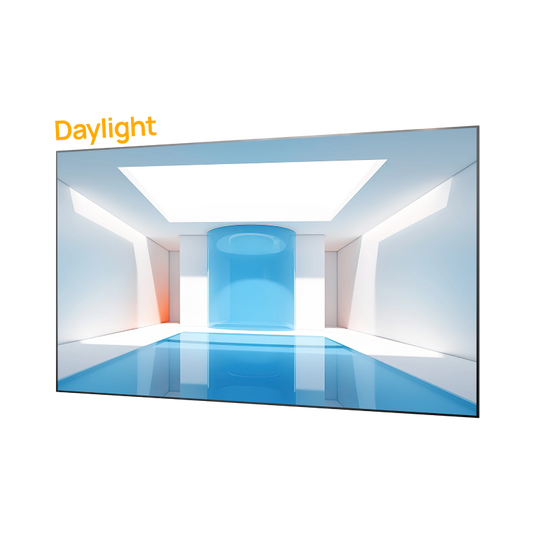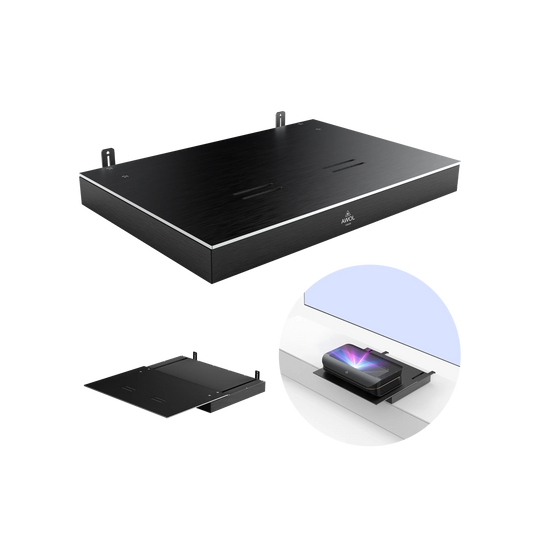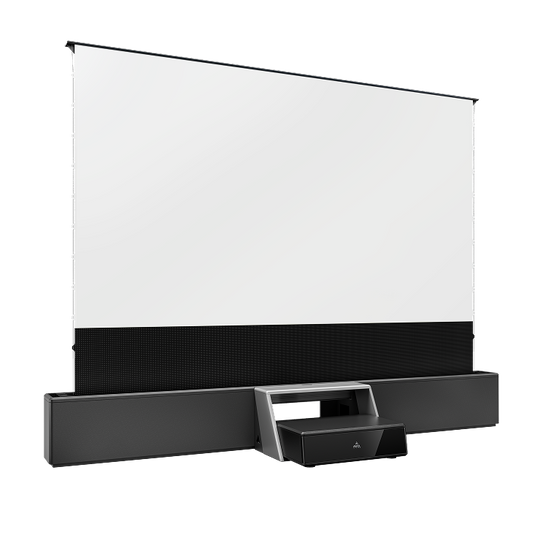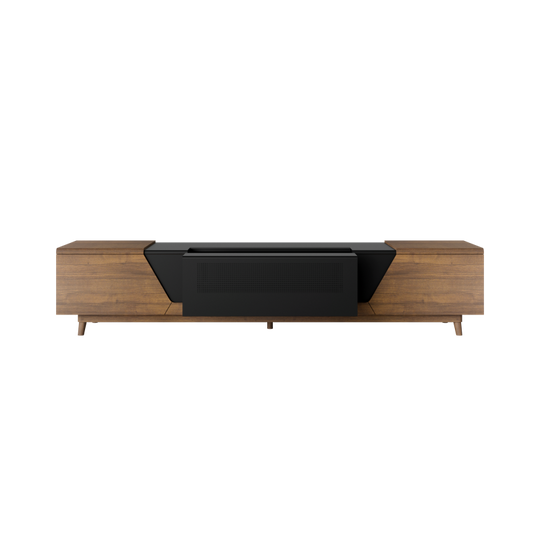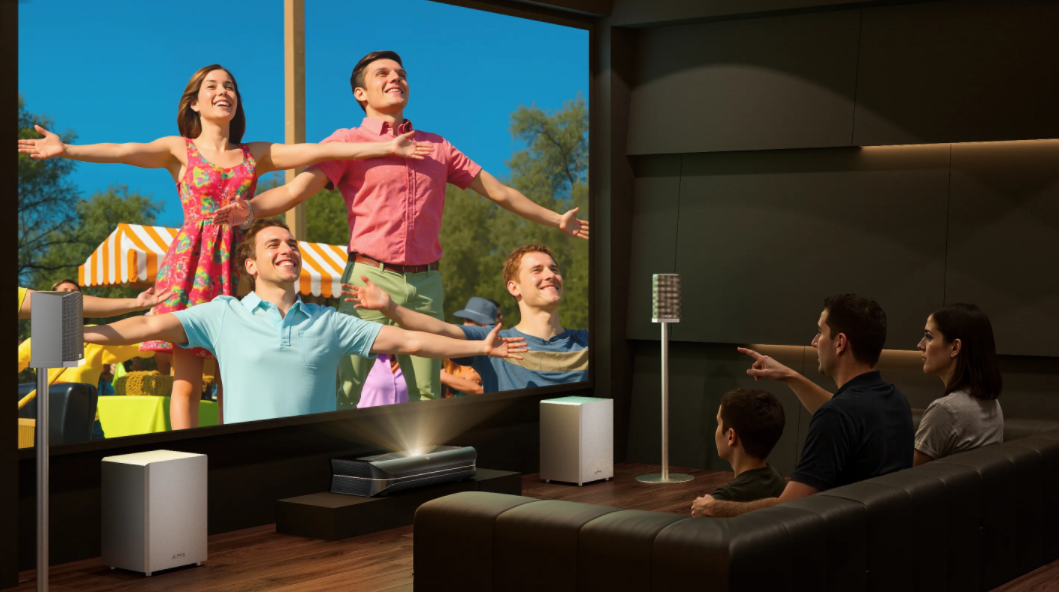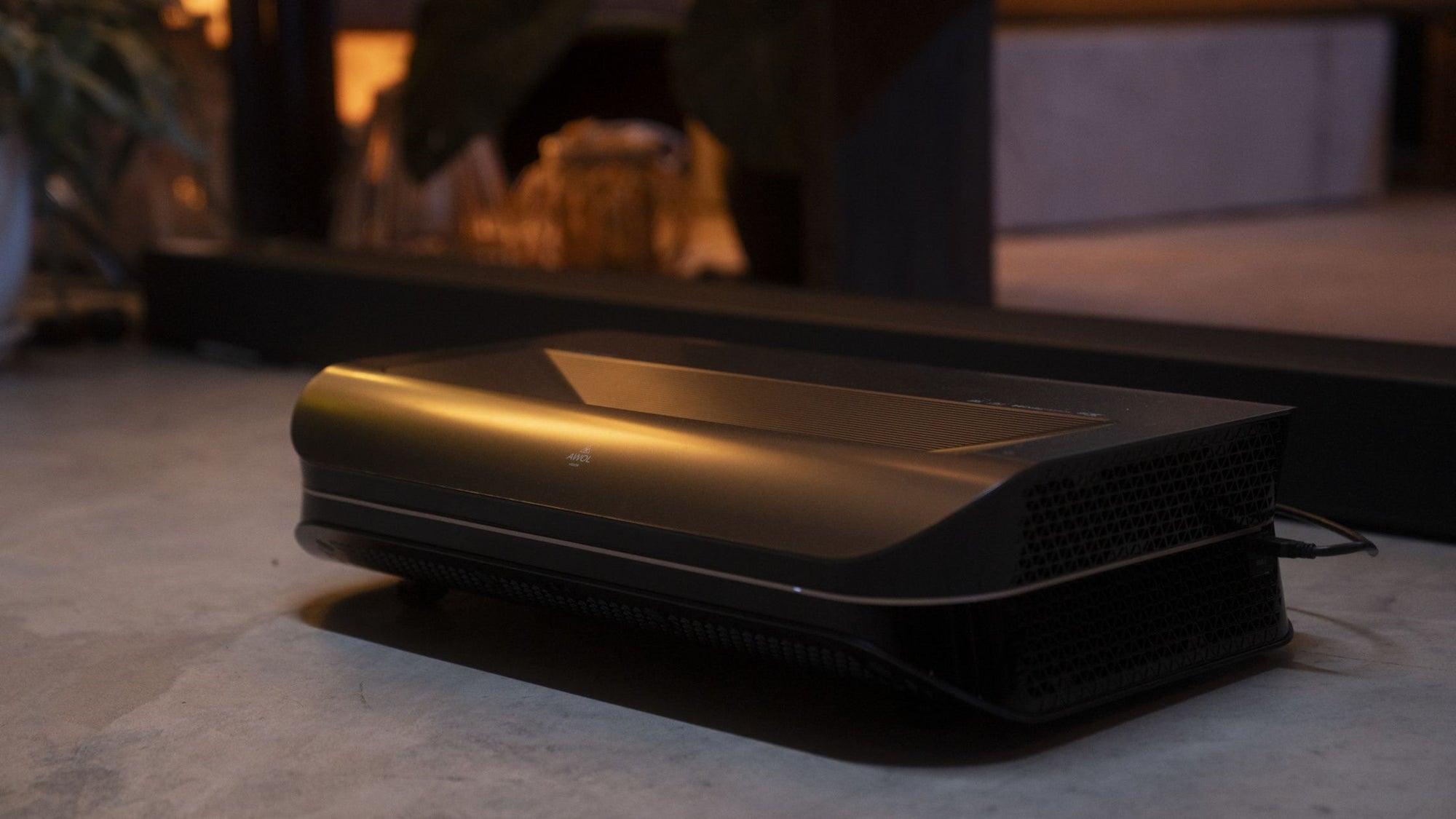It’s frustrating when your once-vibrant home theater starts to look dim, faded, and lifeless. You're left staring at a washed-out image, wondering if the projector bulb is to blame before you go through the hassle—and expense—of replacing it.
If you're trying to diagnose your projector, you're in the right place. Here are the five most common signs that your projector lamp is failing, and a look at the modern technology that makes this problem a thing of the past.
Is Your Projector's Lamp Really Dying? 5 Telltale Signs
Most projector bulbs are high-pressure lamps (UHP) that, just like a regular lightbulb, have a limited lifespan. Here’s how to tell when yours is nearing the end.
Sign 1: The Image is Noticeably Dimmer
This is the most common and most gradual sign. The brightness of a projector lamp fades slowly over its entire life. You may not even notice it from one day to the next, but one day you'll turn it on and realize you have to dim the room lights more than you used to, or that the image just looks weak.
If your picture seems significantly dimmer than you remember, your bulb is likely well past its prime.
Sign 2: Colors Look "Off" or Faded
A projector bulb isn't just responsible for brightness; it's responsible for producing the full spectrum of light that creates accurate colors. As a bulb ages, it loses its ability to produce that full spectrum.
This often results in a picture with a yellowish or purplish tint. You might notice that skin tones look unnatural or that the entire image just seems "muddy." This loss of color accuracy is a classic symptom of an old lamp.
Sign 3: The Image is Flickering
A flickering or "blinking" image is a more urgent sign. The light from a projector lamp is created by a stable electrical arc inside the bulb. As the bulb's components degrade, this arc can become unstable, causing the light output to fluctuate. This visible flicker is a clear signal that the bulb is nearing catastrophic failure.
Sign 4: Your Projector Has a Warning Light
This is the most direct sign your projector can give you. Most lamp-based projectors have a built-in diagnostic system. Look for a "Lamp" or "Replace Lamp" indicator light on the projector's body, which will often turn red or orange when the internal lamp timer has reached its limit. Check your user manual to confirm what your projector's warning light means.
Sign 5: The Projector Shuts Off or You Heard a "Pop"
This is the "game over" sign. There are two ways this happens:
- Sudden Shutdown: You turn the projector on, the fans spin, but the lamp never ignites. After a moment, the projector shuts itself down. This is often a safety mechanism to prevent damage from a failed or dead bulb.
- The "Pop": In some cases, the bulb will fail catastrophically. You may hear an audible "pop" as the bulb shatters inside its housing. When this happens, the projector will go dark immediately and will not power on again until the lamp is replaced.
The Frustrating Cycle of Lamp Projectors

If those signs sound familiar, you’ve correctly diagnosed the problem. But you've also discovered the hidden "catch" of traditional projectors. That bulb is a consumable part, and the cycle of buying, installing, and worrying about it is a common frustration for a reason.
The Problem: A 2,000-Hour Lifespan
Most traditional UHP lamps are only rated for 2,000 to 5,000 hours of use. If you use your projector for a few hours every day, that's a replacement you'll be making every two or three years.
The Hidden Cost: An Expensive Replacement
It's not if you'll replace the bulb, but when. And when you do, it's often an unpleasant surprise. Replacement lamp modules can cost anywhere from $150 to $400, a significant recurring investment just to keep your home theater running.
The Hassle: Warm-Up, Cool-Down, and Maintenance
Beyond the cost, there's the daily hassle. Lamp projectors require a long warm-up time to reach full brightness and an equally long cool-down time (with a loud fan) to shut down safely. You also have to worry about handling a fragile, high-heat component every time you perform maintenance.
The Solution: How Laser Projectors Ended the "Bulb" Problem
What if you could have a projector that never needs a bulb replacement? That’s the technology behind modern laser projectors. They don't have a "bulb" in the traditional sense at all.
A Different Technology: The Laser Light Source
Instead of a fragile, high-pressure bulb, projectors like those from AWOL Vision use an advanced, solid-state laser engine to create the image. This durable light source is a fundamentally different and superior technology.
The Lifespan: 25,000+ Hours of Consistent Brightness
This is the most significant advantage. A laser light source is rated for 25,000 hours or more.
To put that in perspective: That's like watching a 2-hour movie every single day for over 34 years.
Unlike a bulb, a laser doesn't fade dramatically or "pop." It provides consistent brightness and color for its entire lifespan, only reaching half-brightness after its 25,000-hour rating.
No Warning Lights, No "Pops," No Replacements
Because there is no bulb to fail, all the problems you're facing simply disappear:
- No "Replace Lamp" warning lights
- No sudden "pop" or failure
- No flickering
- No expensive replacements
The laser light source is a permanent component. It's not user-replaceable for one simple reason: it's designed to last the entire life of the projector, just like the panel in your TV.
Instant On, Instant Off, and Better Color
The benefits go beyond lifespan. A laser engine provides:
- Instant On/Off: No more waiting for the projector to warm up or cool down.
- Stunning Color: Lasers produce incredibly pure, vibrant colors that don't degrade over time.
- Consistent Brightness: The brightness you see on day one is the brightness you'll see for years to come.
When to Upgrade Instead of Replacing Your Bulb

If you're staring at a $300 bill for a new replacement bulb, it may be the perfect time to stop investing in fading technology. Upgrading to a laser projector isn't just about avoiding bulb replacements; it's about a total leap in performance and convenience.
Consider making the switch if:
- You're tired of the maintenance cycle and want a "set it and forget it" home theater.
- You want 4K clarity in a bright room. Modern Ultra Short Throw (UST) laser projectors are bright enough to create a massive, 120-inch+ screen in your living room, even with the lights on.
- You want an all-in-one "Smart TV" experience. Today's laser projectors have smart platforms, apps, and premium sound built-in, ready to replace your TV entirely.
Stop Worrying About Bulbs. Start Enjoying the View.
Your home theater should be a source of enjoyment, not a constant maintenance chore. While that dimming picture almost certainly means you need a new bulb, it's also an opportunity to upgrade to a technology that frees you from the cycle.
Explore a new generation of home theater that just works—instantly, brilliantly, and for decades to come.
